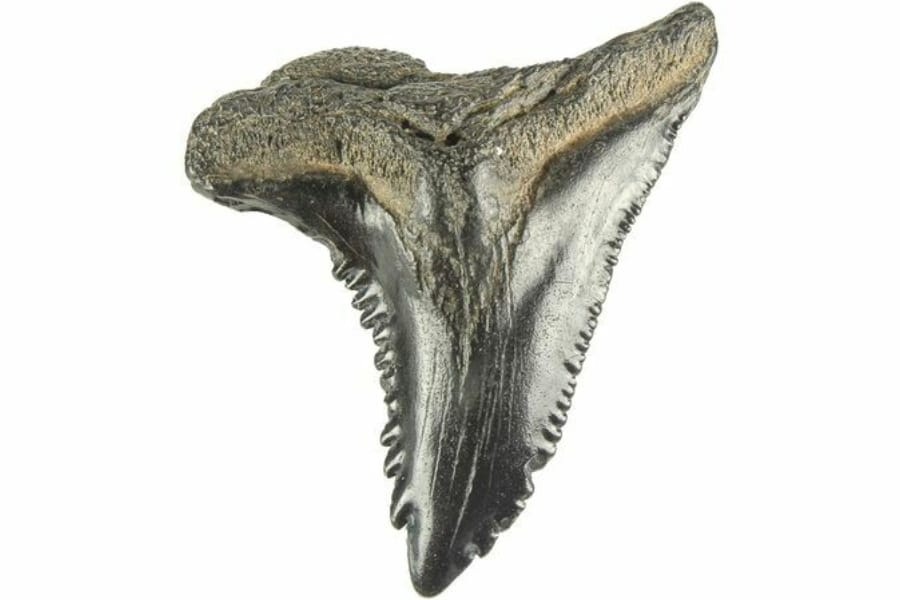Fossils provide us with incredible insights into Earth’s ancient history and finding one feels like discovering a hidden treasure. If you’re thinking of a great place to hunt for fossils, focus your sights on South Carolina.
Our state is rich in these natural wonders, but finding them isn’t exactly easy. In fact, uncovering South Carolina fossils can be quite challenging. They are often hidden beneath layers of sedimentary rocks or tucked away in remote locations.
What you need is the right guidance to finding fossils in South Carolina, and we’ll give you just that! We’ve scoured our state and compiled a list of proven sites where you’re more likely to strike fossil gold. Some of these spots include Edisto Beach, Charleston Embayment, Harleyville Formation, Folly Beach, and Myrtle Beach.
We’ll also dive into the incredible diversity of South Carolina fossils, both rare and common ones. At the end of this article, you’ll appreciate our state for the smorgasbord of fossil treasures that it offers. Let’s begin!
The Fossils Of South Carolina You Can Find
With its bountiful resources, it’s not surprising that South Carolina has many great rockhounding sites.
But before we go in-depth about these places, particularly those where you can find fossils, let’s first get to know the rare and common South Carolina fossils that you might encounter:
- The extensive local experience and understanding of our team
- Input from multiple local fossil hunters and fossil groups
- The accessibility of the various locations
- Safety and potential hazards when collecting
- Private and public locations
- A desire to include locations for both experienced fossil lovers and those who are just starting out
Using these weights we think we’ve put together the best list out there for those who love finding great new fossils for our collections!
Common South Carolina Fossils
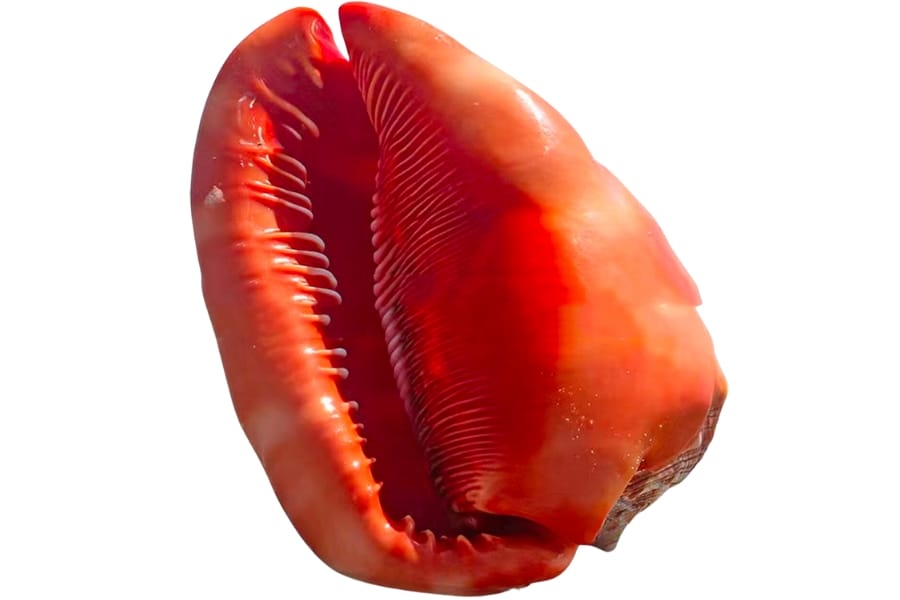
In your exploration here, below are some of the common South Carolina fossils that you might find:
- Contemporary shoreline shells
- Corals
- Mammal teeth and bones
- Marine fossils
- Shark teeth
South Carolina State Fossil – Columbian Mammoth
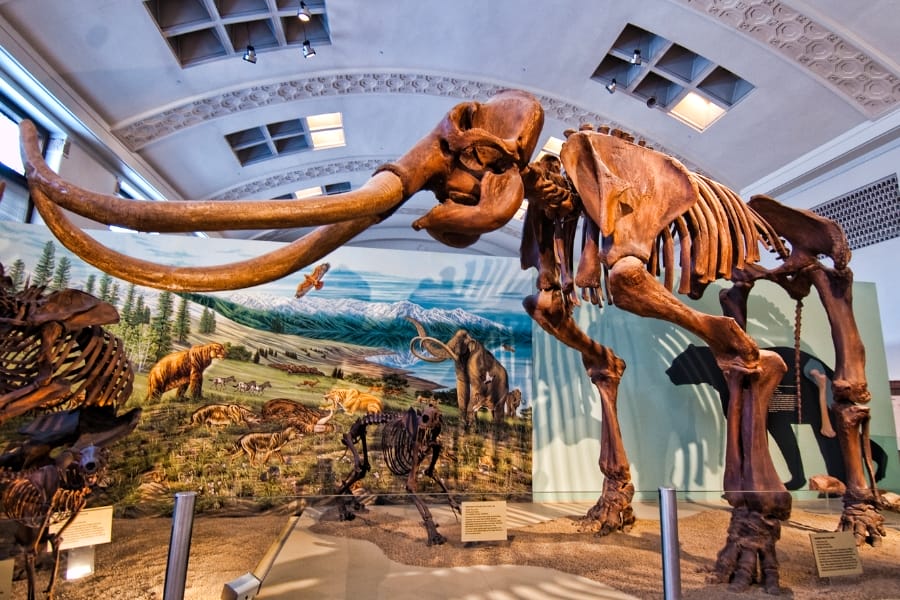
The Columbian Mammoth was a close relative of the more famous Woolly Mammoth, and it roamed North America during the Pleistocene epoch, which was around 1.8 million to 11,000 years ago.
What makes it special is its massive size. It stood approximately 13 to 14 feet tall at the shoulders, making it one of the largest land mammals to ever walk the Earth.
One of its most distinctive features is its long, curved tusks, which could reach up to 16 feet in length! These tusks were used for various purposes, such as digging for food, stripping bark from trees, and possibly even for defense. Interestingly, they had a diet primarily composed of grasses, shrubs, and other vegetation.
The Columbian Mammoth was a frequent visitor to South Carolina during the Pleistocene era. Its fossils have been discovered in various parts of our state, including our coastal plain and river valleys.
Rare South Carolina Fossils
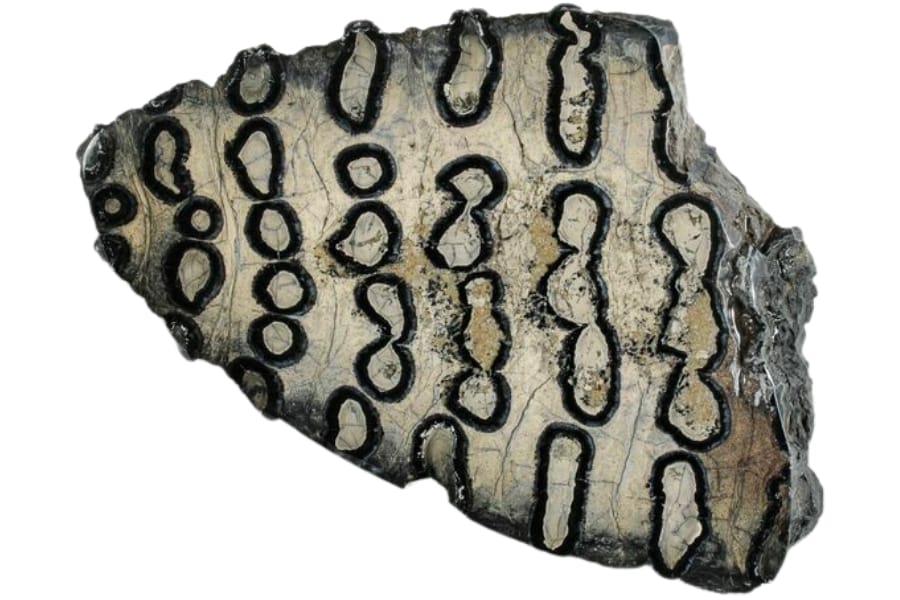
If you’re looking in the right places (and lucky enough!), you also have the chance to find the following rare South Carolina fossils:
- Mammoth
- Mastodon
- Megalodon
- Ground sloths
- Turtle
The Best Places To Find Fossils In South Carolina
When it comes to finding fossils in South Carolina, you have plenty of places to explore. But below are our best recommendations based on our personal experience and those of other adventurers who have explored our state for fossils:
Always Confirm Access and Collection Rules!
Before heading out to any of the locations on our list you need to confirm access requirements and collection rules for both public and private locations directly with the location. We haven’t personally verified every location and the access requirements and collection rules often change without notice.
Many of the locations we mention will not allow collecting but are still great places for those who love to find beautiful rocks and minerals in the wild without keeping them. We also can’t guarantee you will find anything in these locations since they are constantly changing.
Always get updated information directly from the source ahead of time to ensure responsible rockhounding. If you want even more current options it’s always a good idea to contact local rock and mineral clubs and groups
Edisto Beach
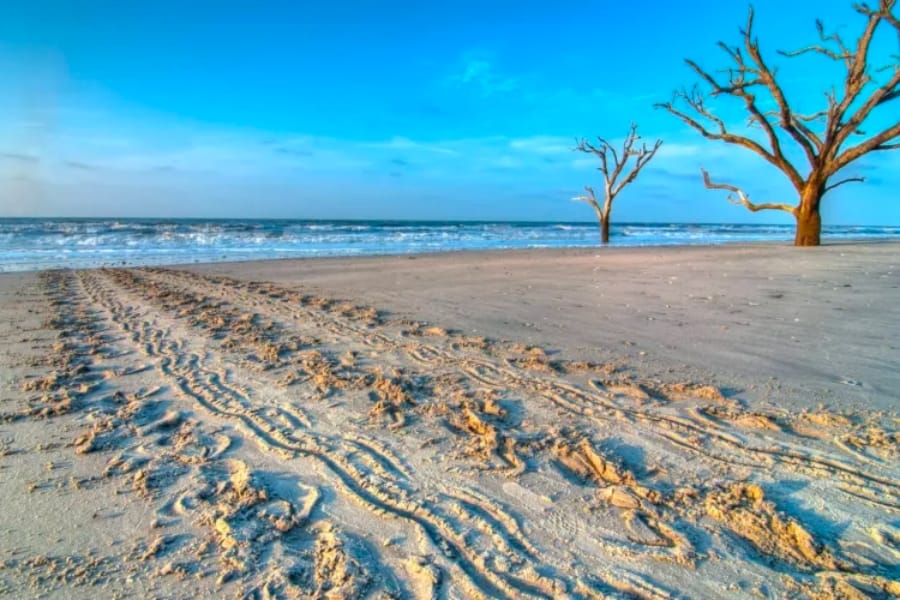
Nestled on the southeastern coast of our state, Edisto Beach is a fantastic destination for fossil enthusiasts and beach lovers.
What makes this place particularly good for finding fossils is its geology and location. The beach is part of the ACE Basin, a pristine estuarine ecosystem, and it’s situated along the Atlantic Ocean.
The area’s geological history includes deposits from the late Oligocene to the Pleistocene epochs, which means you have a chance to discover a wide range of fossils spanning millions of years.
Getting to Edisto Beach is relatively easy, making it accessible for both locals and visitors. It’s located about an hour’s drive south of Charleston, a major city in South Carolina. There are several public access points to the beach, including beachfront parks and parking areas.
Where and what fossils to find in Edisto Beach
As you stroll along the shoreline, keep your eyes peeled for fossils like shark teeth, Carcharodon megalodon (the largest shark that ever lived!), and contemporary shoreline shells.
You can also find fossils that got washed onto this beach, such as mammoths, mastodons, ground sloths, giant armadillos, giant beavers, long-nosed peccaries, ancestral horses, globular ear bones of whales, dolphin vertebrae, curved rib remnants of sea cows, and piecemeal remains of sea turtles.
DON'T MISS OUT ON ANY GREAT FINDS!
While you're out searching for Fossils you're going to find A LOT of other interesting rocks and minerals along the way. The last thing you want to do is toss out something really interesting or valuable. It can be easy to misidentify things without a little guidance.
We've put together a fantastic field guide that makes identifying 140 of the most interesting and valuable rocks and minerals you will find REALLY EASY. It's simple to use, really durable, and will allow you to identify just about any rock and mineral you come across. Make sure you bring it along on your hunt!
Ashley River
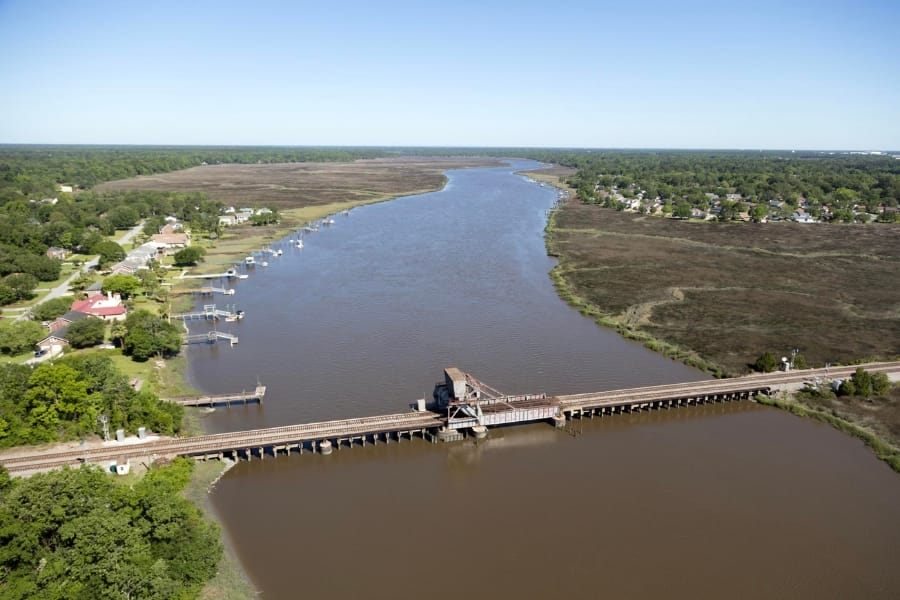
Ashley River is a picturesque site that’s located in the Lowcountry region of our state. Its geological history made it an ideal spot for finding fossils in South Carolina.
It contains deposits from the late Oligocene to the Pleistocene epochs, spanning millions of years. This diversity of ages means you can stumble upon a wide array of fossils, from ancient seashells to the remains of long-extinct marine creatures.
To go here, you can expect a relatively straightforward trip. The river’s accessible for both locals and visitors as it flows through the city of Charleston. You can explore various points along its banks, especially in the outskirts and the Francis Marion National Forest.
Where and what fossils to find in Ashley River
When you explore Ashley River, you can find brachiopods, shark teeth, and forams, among other fossils. Its combination of scenic beauty and fossil-rich deposits creates a serene and captivating environment for fossil hunting.
Harleyville Formation
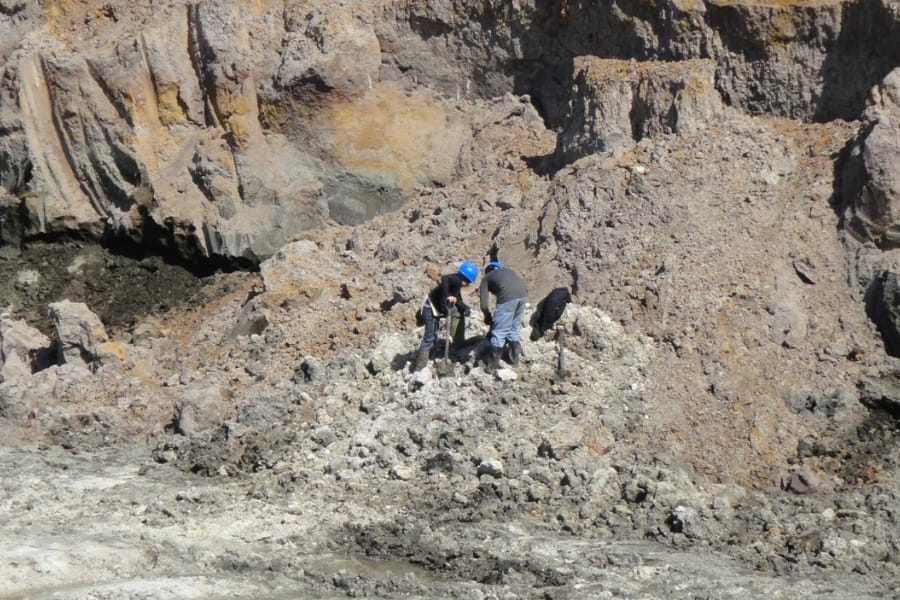
The Harleyville Formation is a geological wonderland in the Lowcountry region of our state. It holds secrets of prehistoric life and provides a unique opportunity to uncover remarkable fossils.
It primarily consists of sedimentary rocks that date back to the Oligocene epoch, around 25 to 28 million years ago. These rocks were formed in a marine environment, and as a result, they contain a wealth of marine fossils.
These fossils provide a window into the diverse and vibrant marine life that once thrived in the region millions of years ago.
Harleyville Formation is situated in various locations across the Lowcountry, including parts of Dorchester County, so going here will be easy as it’s easily accessible. You can explore roadcuts, stream banks, and other exposed sections of the formation to hunt for fossils.
Where and what fossils to find in the Harleyville Formation
You can find remains of Eocene giants if you explore the Harleyville Formation. Some of these notable finds are teeth of the megalodon shark, Otodus Auriculatus, and early whales, such as Basilosaurus.
Folly Beach
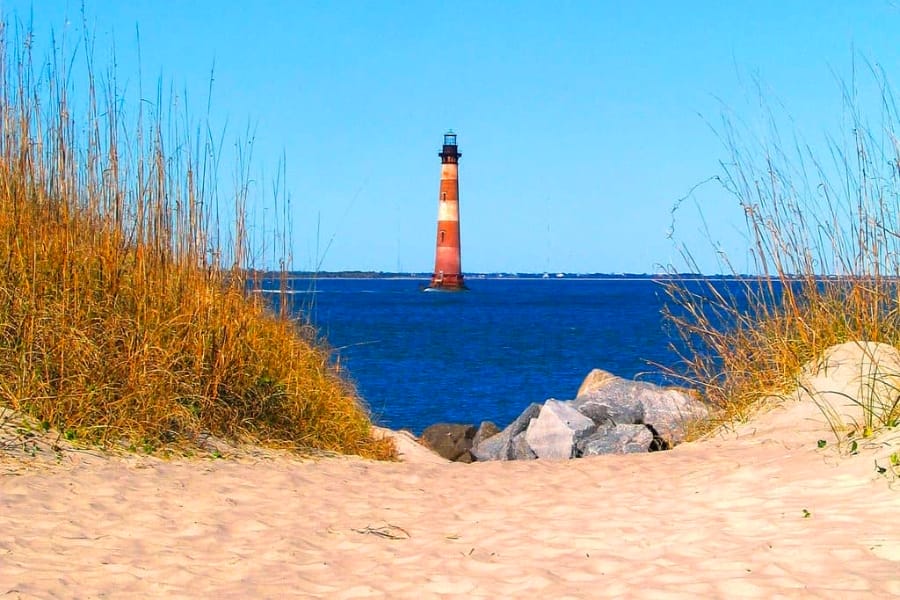
Folly Beach is a coastal haven for both beachgoers and fossil enthusiasts. Situated just a short drive from historic Charleston, it offers a fantastic opportunity to discover fossils.
The beach lies within the ACE Basin and is part of the Charleston Embayment. Over millions of years, it was submerged by shallow seas, leaving behind layers of sediment rich in fossils.
These sediments date back to various epochs, including the Oligocene, Miocene, and Pliocene, providing a wide range of fossils to explore.
Accessing Folly Beach is easy, making it a convenient destination for locals and tourists. It’s located just 15 miles from downtown Charleston, and there are several public access points with ample parking facilities.
Once you arrive here, you’ll find a beautiful stretch of shoreline with plenty of opportunities for fossil hunting.
Where and what fossils to find in Folly Beach
Folly Beach is home to remarkable fossils of shark teeth, megalodon sharks, sea robin fish, drum fish, and assorted rays. If you search through the area keenly, you can also find armadillos, capybaras, mammoths, mastodons, tapirs, and turtle fossils.
Myrtle Beach

Myrtle Beach, known for its sandy shores and oceanfront attractions, might not be the first place that comes to mind when you think of fossil hunting. But this popular coastal destination offers a unique opportunity for fossil enthusiasts.
This beach is part of the Atlantic Coastal Plain, which contains sediments from various epochs. You can find fossils primarily in the Eocene and Miocene formations, with marine creatures as common finds.
If you’re a beach lover, you probably already know that getting to Myrtle Beach is a breeze. It’s well-connected, with the Myrtle Beach International Airport that provides convenient access for those traveling from afar.
Where and what fossils to find in Myrtle Beach
You can explore the beachfront for fossilized shark teeth, which are usually black or dark brown. You can also find animal bones, horses’ teeth, and fossilized shells here.
Other Top Places To Find South Carolina Fossils By Region
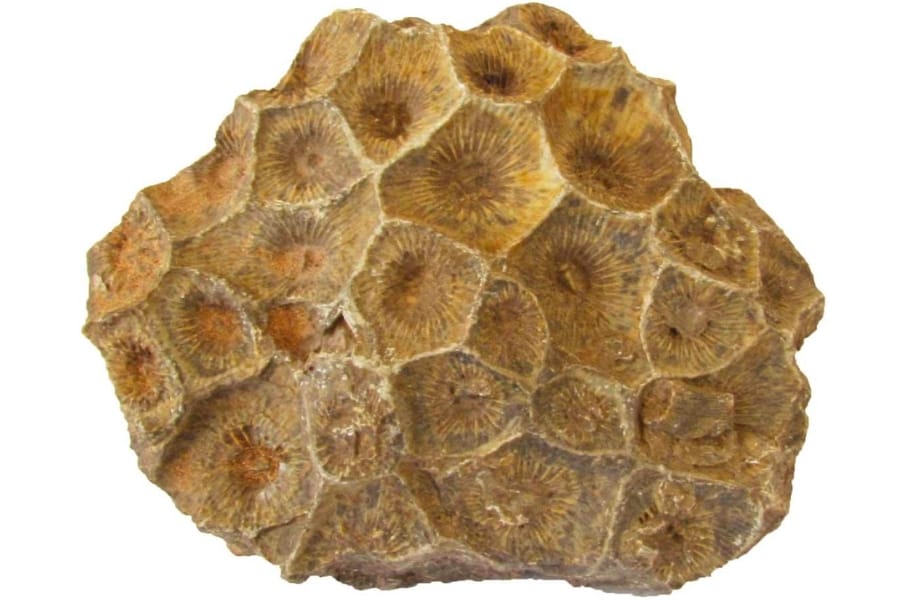
Aside from our top recommended places, below are many other proven sites where you can find rare and common South Carolina fossils:
| Location | Fossils |
| Tinker Creek in Aiken County | Volutocorbis, Nucula, Leda, Ostrea, Pecten, Corbula, Tellina, Cytherea, Venericardia, Pteropsis, Spisula |
| Mouth of Kings Creek in Allendale County | Coral fossils |
| Lower Three Runs in Baldock, Barnwell County | Ostrea |
| Savannah River in Shell Bluff, Barnwell County | Ostrea |
| Goose Creek Limestone in Berkeley County | Shark teeth, C. megalodon |
| Exposures in Cross Quarry, Berkeley County | Sharks, Rays, Echinoids, Shells |
| Martin-Marietta Quarry in Cross, Berkeley County | Echinoids, Mollusks, Bryozoa |
| Warley Creek in Lone Star, Calhoun County | Venericardia |
| Spoil pits of Bolton mine in Charleston County | Bryozoa, Bivalves, Shark Teeth, Mammal bones, Cirripedes |
| Wando Formation in Charleston County | Ground sloths, Bears, Mastodons, Tapirs |
| Outcrops between Burches Ferry and Yauhannah Ferry in Chesterfield County | Marine fossils |
| Bed of Sammy Swamp in Clarendon County | Pseudoliva, Calyptraphorus, Miterella, Turritella, Natica, Ostrea, Venericardia |
| Near Raysor Bridge on Edisto River in Colleton County | Paracyathus, Epitonium, Turritella, Fissuridea, Cadulus, Nucula, Leda, Yoldia, Glycymeris, Arca, Ostrea, Pecten, Plicatula, Crassatellites, Astarte |
| Ashley and Chandler Bridge Formations in Dorchester County | Early whales, O. angustidens, Cetacea |
| Four Hole Swamp in Dorchester County | Shark teeth, Corals, Mollusk casts |
| Blue Circle Cement in Dorchester County | Shark, Dugong, Fish, Turtle |
| Ten Mile Hill Beds in Dorchester County | Ice Aged land mammals, Gomphothere, Glyptodonts |
| Mars Bluff in Florence County | Belemnitella, Exogyra, Anomia, Ostrea, Liopistha, Aphrodina, Turritella, Belemnitella |
| North bank of Black River in Georgetown County | Ostrea, Modiolus, Venericardia, Melina, Liotia |
| Waccamaw Formation in Georgetown County | Sharks, Whales, Ice Age land mammals |
| Atlantic Ocean beaches from Winyah Bay to NC line in Horry County | Exogyra, Shark teeth, Gastropods |
| Area exposures in Savannah River, Jasper County | Mollusk shells |
| Head of First Creek in Lexington County | Venericardia, Shark teeth |
| Nichols-Galivants Ferry road in Marion County | Ostrea, Exogyra, Trigonia, Veniella, Crassatellites, Cardium, Cyprimeria, Aphrodina, Legumen, Leptosolen, Pholadidae |
| Early Branch on the Columbia road in Orangeburg County | Cancellaria, Turricula, Phos, Crepidula, Leda, Yoldia, Trigonarca, Pinna, Pteropsis, Mactra |
| South shore of Lake Marion in Orangeburg County | Mollusks |
| South of Blenheim area in Marlboro County | Cycads |
| Fuller’s Earth Creek in Pinewood, Sumter County | Ostrea, Venericardia,Turritella, Corals, Mollusks |
| Roadside exposures in Suttons, Williamsburg County | Bryozoa, Ostrea, Anomia, Pecten |
Common Questions About Fossil Hunting In South Carolina
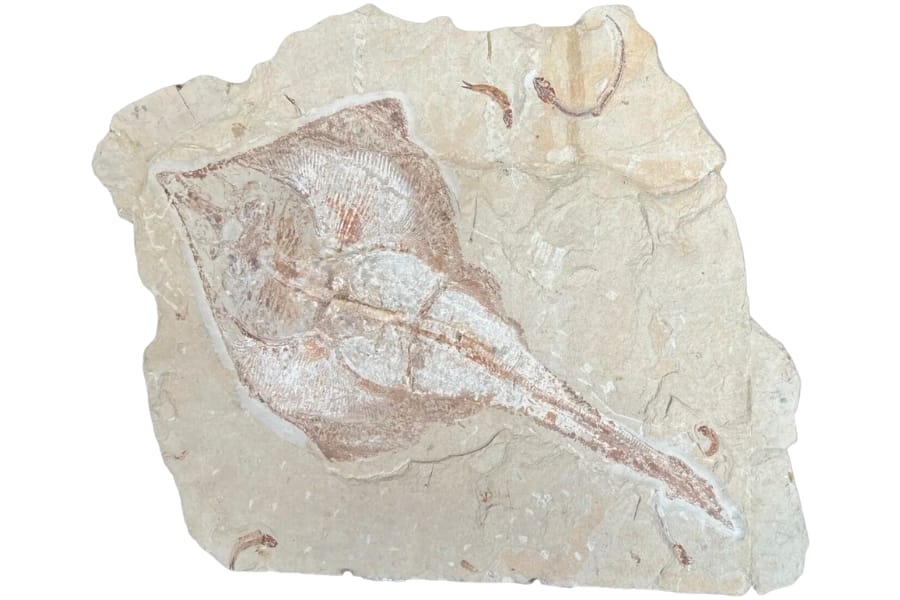
Now that you know the right places to explore for fossils in South Carolina, the next step to a successful hunt is to be aware of the common fossil hunting-related questions, such as:
Can you find megalodon teeth or shark teeth in South Carolina?
Yes, you can find both megalodon teeth and various species of shark teeth in South Carolina. Common shark teeth include those from species like the great white shark, mako shark, and tiger shark, among others.
Our coastline, particularly in areas like Folly Beach, Edisto Beach, and the Charleston area, is known for its rich deposits of fossilized shark teeth. To increase your chances, you can also search near tidal pools, riverbanks, and areas with exposed fossil-bearing strata.
Is it illegal to collect fossils in South Carolina?
It’s generally legal to collect fossils in South Carolina. For personal use, it’s allowed on public lands, though specific rules and permits may apply depending on the location.
When collecting on private property, it’s essential to obtain permission from the landowner to avoid trespassing. It’s also important to note that disturbing cultural or historic resources is illegal.
Certain marine fossils can also be collected from the beach, but it’s advisable to check for any local regulations or updates that may apply. If you need more guidance, you may visit the South Carolina Department of Natural Resources (DNR).
Can you find dinosaur bones in South Carolina?
While South Carolina does have a rich fossil record, finding dinosaur bones here is exceptionally rare. Our state’s fossil record predominantly contains remnants of ancient marine life, such as prehistoric sharks, marine reptiles, and mollusks.
Dinosaur fossils are more commonly found in regions with different geological histories, such as areas that were once terrestrial environments with the right conditions for dinosaur preservation.
While some isolated dinosaur tracks and fragmentary remains have been discovered here, they are relatively uncommon compared to other states with more extensive dinosaur fossil records.
Our Favorite Places To Buy Fossils In South Carolina

Another great way to find South Carolina fossils is to visit our local shops that sell them and other natural wonders, not only from our state but from all over the U.S. Below are some of these shops:
- A&A Rockshop – 1614, 1624 W Main St, Lexington, SC 29072
- Charleston Fossil Adventures – PO Box 1608, Ladson, SC 29456
- Cornerstone Minerals and Natural History – 36 N Market St #103, Charleston, SC 29403
- Dixie Gem – 2517 Poinsett Hwy, Greenville, SC 29609
- Greenville Gemstone Mine – 205 N Main St, Greenville, SC 29601
- Kidz Rocks – 1102 Links Rd, Myrtle Beach, SC 29575
- Palmetto Fossils Excursions – Summerville, SC

